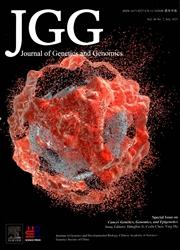Nanopore sequencing: flourishing in its teenage years.
IF 6.6
2区 生物学
Q1 BIOCHEMISTRY & MOLECULAR BIOLOGY
引用次数: 0
Abstract
Over the past decade, nanopore sequencing has experienced significant advancements and changes, transitioning from an initially emerging technology to a significant instrument in the field of genomic sequencing. However, as advancements in next-generation sequencing technology persist, nanopore sequencing also improves. This paper reviews the developments, applications, and outlook on nanopore sequencing technology. Currently, nanopore sequencing supports both DNA and RNA sequencing, making it widely applicable in areas such as telomere-to-telomere (T2T) genome assembly, direct RNA sequencing (DRS), and metagenomics. The openness and versatility of nanopore sequencing have established it as a preferred option for an increasing number of research teams, signaling a transformative influence on life science research. As nanopore sequencing technology advances, it provides a faster, more cost-effective approach with extended read lengths, demonstrating the significant potential for complex genome assembly, pathogen detection, environmental monitoring, and human disease research, offering a fresh perspective in sequencing technologies.纳米孔测序:正值青春年华。
在过去的十年中,纳米孔测序技术经历了重大的进步和变化,从最初的新兴技术过渡到基因组测序领域的重要仪器。然而,随着下一代测序技术的不断进步,纳米孔测序技术也在不断改进。本文回顾了纳米孔测序技术的发展、应用和前景。目前,纳米孔测序支持 DNA 和 RNA 测序,因此可广泛应用于端粒到端粒(T2T)基因组组装、直接 RNA 测序(DRS)和元基因组学等领域。纳米孔测序技术的开放性和多功能性使其成为越来越多研究团队的首选,预示着它将对生命科学研究产生变革性影响。随着纳米孔测序技术的发展,它提供了一种更快、更具成本效益、读取长度更长的方法,在复杂基因组组装、病原体检测、环境监测和人类疾病研究方面展现出巨大的潜力,为测序技术提供了一个全新的视角。
本文章由计算机程序翻译,如有差异,请以英文原文为准。
求助全文
约1分钟内获得全文
求助全文
来源期刊

Journal of Genetics and Genomics
生物-生化与分子生物学
CiteScore
8.20
自引率
3.40%
发文量
4756
审稿时长
14 days
期刊介绍:
The Journal of Genetics and Genomics (JGG, formerly known as Acta Genetica Sinica ) is an international journal publishing peer-reviewed articles of novel and significant discoveries in the fields of genetics and genomics. Topics of particular interest include but are not limited to molecular genetics, developmental genetics, cytogenetics, epigenetics, medical genetics, population and evolutionary genetics, genomics and functional genomics as well as bioinformatics and computational biology.
 求助内容:
求助内容: 应助结果提醒方式:
应助结果提醒方式:


